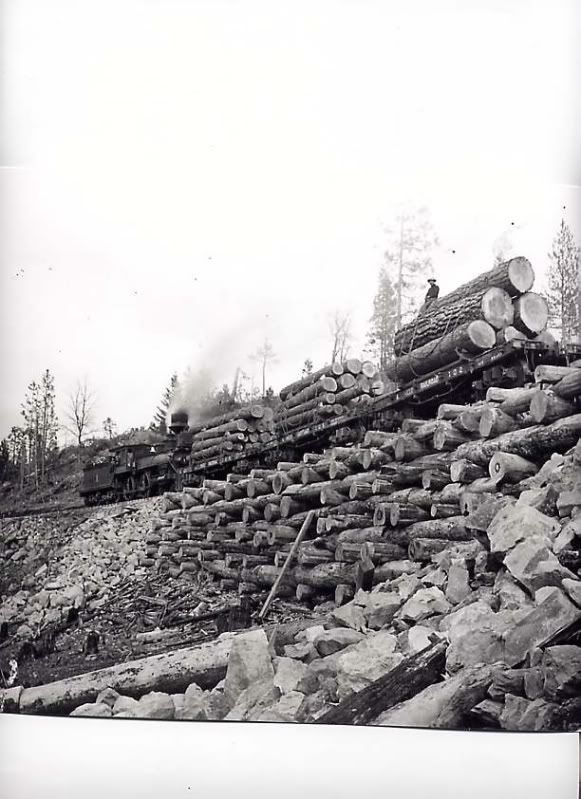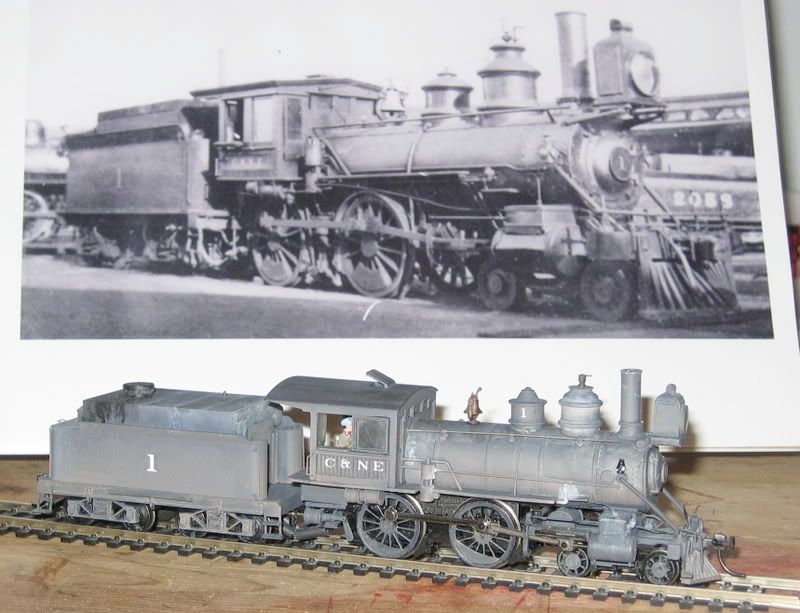I’ll admit…I haven’t yet done any checking of reference materials that I may have.
But thought I would throw this out to the forum. I’m wondering what kind of tonnage a Modern American Richmond could move?
Long story, short: My Climax (for my Sawyer Lumber line) went belly up and Bachmann could not repair or replace it. In lieu of, I got a .
It’s a pretty nice little loco, but the only rod type running on the SLRR. The trackage is depicted as very rustic, with pretty sharp curves (18” r.) and steep grades (2%) with this engine running only on SLRR trackage bringing cars to interchange or re-load.
For the most part the rolling stock is 26’ skeleton log cars, 26’ flats with bolt or pulp loads, an occasional 40’ gondola (still hauling wood products) and boxcar with supplies.
So…I’m wondering how many of these loaded shorties could one expect to see behind this rod engine?
Thanks.
The Bachmann 4-4-0 is based upon the Maryland & Pennsylvania locomotives #4, #5 and #6, which were built in 1901 with 62" drivers. According to Hilton’s The Ma & Pa, these locomotives exerted a tractive effort (TE) of 16,640 lbs. By comparison, the Ma & Pa “light” 2-8-0 (#23-26) exerted 25,770 lbs of tractive effort. For Shay locomotives, the TE can really vary with the weight of the locomotive, but a mid-range for a 80-ton 3-truck shay similar to that offered by Bachmann (or similar to some of those at Cass, WV) is 30,350 lbs. Others on this site can get far more detailed on the impact of cylinder size and steam pressure, but this gives a basic comparison point.
So, you can figure that 4-4-0 pulling about half of what one of your Shays would pull. Many logging lines did roster 4-4-0s or similar locomotives that they had picked up in the used (i.e. inexpensive) market. These small rod engines were often used for tasks such as pulling the supply train, the “passenger” accomodation for the loggers, or switching the interchange with the connecting railroad. If the line had some relatively flat trackage between the mountain and the mill, the rod engine may serve as a “collector” to move cars to the mill that had been brought down the mountain by the slower geared locomotives. Those 4 drivers would get pretty “slippery” on a grade (especially with any moisture on the rail), so they would not often be seen in mountain logging service… although there are exceptions.
My HO Winneshiek & Western is a could-have-been log and coal hauler in the mountains of SW Virginia. I have one of the Bachmann 4-4-0s and built a Maryland & Pennsylvania postal/baggage and a coach to go with it. I thus run some passenger service that looks like a Ma & Pa passenger train except for the lettering. Two of the three Bachmann Climax locomotives
This is a picture I obtained from the Siskiyou County Historical Society. It shows Weed Lumber Company No. 1 at the tail end of 3 loaded log flats on their way to the log pond in northern California. It was built by Portland in 1881with 60 inch drivers ( note the steam dome ahead of the sand dome). The grades in the area of this photo were up to 3.5%! The date is sometime between 1901 and 1905 at which time the Weed railroad and locomotives were purchased by the California Northeastern ( A subsidiary of the SP). I Bashed it using a Spectrum 4-4-0 and replacing the Bachmann boiler with a Model Power boiler. The second photo shows my bash after the SP converted it from wood to Oil. Peter Smith, Memphis 

Depending on the grade you should be able to get 4 to 5 cars up hill especially if they are empty . Douwn hill you may get an extra car or 2 , again depending on the grade and the load .

